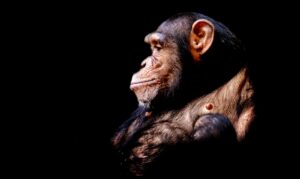Smiles are universal symbols of joy, but have you ever wondered, do animals smile? From the playful grins of primates to the infectious charm of quokkas, the animal kingdom is brimming with expressions that rival our own. While some animals, like apes and monkeys, clearly use smiles to convey emotion, others leave us guessing whether their toothy displays reflect happiness or something else entirely.
Take elephants, for instance—they often appear to smile while playing or enjoying themselves, even wagging their tails like a happy dog. Meanwhile, cows light up with visible joy on sunny days, and alpacas charm us with their angelic smiles and calming presence. Whether intentional or not, these moments remind us of the emotional depth animals possess. Exploring their smiles not only brings us closer to understanding them but also puts a grin on our own faces.
Understanding Animal Smiles
Smiling in animals presents a fascinating aspect of their facial expressions and behaviors. While humans smile as a universal gesture, animal smiles may serve different purposes depending on the species and context.
What Does It Mean to Smile?
A smile, in humans, is typically associated with joy, pleasure, or social bonding. In animals, this concept becomes more complex. Many animals, such as chimpanzees and dolphins, show behaviors resembling a smile. For instance, a dog smile often features an open mouth and relaxed lips, sometimes accompanied by wagging tails or playful body language. Unlike humans, these smiles aren’t always an expression of happiness. In some species, baring teeth can signify submission, fear, or aggression rather than joy.

Scientists studying animal communication suggest that smiling in the animal kingdom varies greatly. While a happy dog might wag its tail and make eye contact, other animals like cats use subtle body language, such as ear movement or slow blinks, to express positive emotions. These differing expressions demonstrate the unique ways creatures convey emotions beyond the human smile.
Differences Between Human and Animal Smiles
Human smiles generally convey positive emotions or serve as tools for social interactions and bonding. Unlike animals, humans smile in different social and emotional contexts, including fake or polite smiles. For instance, only humans exhibit what scientists call the Duchenne smile, which combines eye and mouth expressions for an authentic display of joy.
In the animal world, smiling has broader interpretations. Primates like chimpanzees grin during social interactions, but these expressions often reflect nervousness or submission. Dogs, on the other hand, express their emotions with more dynamic cues. A dog’s body language, including wagging tails, playful jumping, or even a distinctive grin, helps them communicate their state of mind with humans and other dogs. Such displays reinforce the bond between pets and their owners, creating mutual joy and understanding.

Facial expressions and smiling behaviors in animals highlight the vast diversity and complexity of emotional communication across species, emphasizing that not all smiles mean the same thing.
Examples Of Animals That Smile
Many animals, whether through grins, expressions, or actions, show what seems to be smiles. Their facial expressions and body language often reflect their emotions, making them fascinating to observe.
Quokkas: The Happiest Animal?
Quokkas, small marsupials native to islands near Australia, have gained worldwide fame for their perpetual grins. Their seemingly constant smile has earned them the title “happiest animal in the world.” Though their facial structure naturally forms this expression, scientists believe their demeanor and interactions enhance their cheerful reputation. People often capture selfies with these animals, highlighting their friendly behavior and charm.
Chimpanzees: Expressions Of Emotions

Chimpanzees use facial expressions, including grins, during social interactions. Their smiles aren’t always associated with happiness, though. During nervous or submissive moments, chimps expose their teeth in a smile-like gesture. Yet in positive contexts, such as play or bonding, their behavior mirrors human social smiles, showing a complex range of emotions. These creatures demonstrate that smiling can serve multiple purposes across different species.
Dogs: Smiles Or Something Else?
Dogs often display behaviors that many dog owners perceive as smiling. An open mouth with relaxed lips, coupled with a wagging tail, can signal contentment. However, a dog’s body language and context are crucial to understanding the intent, as not all dogs show happiness the same way. Other animals also share similar expressions, but dogs’ emotional displays are particularly endearing due to their deep connection with humans. Observing their playful and joyful signs, including those interpreted as smiles, reinforces the strong bond between people and their pets.
Interpretations Of Animal Smiling Behavior
Animal smiling behavior reflects a combination of emotional expressions and instinctive reactions varying by species. Unlike human smiles, many animals use grins or smile-like expressions for different purposes tied to their environment and social context.
Emotional Expressions Vs. Instinctive Reactions
Emotional expressions in animals often appear through behaviors that humans perceive as smiles. For instance, a dog’s open mouth and wagging tail, typically seen as a “dog smile,” may indicate happiness and social bonding. Scientists note that dogs, during play or greetings, display relaxed body language, which helps humans identify their joy.
In contrast, many animals exhibit instinctive reactions rather than deliberate emotional expressions. Primates, such as chimpanzees, “grin” to signal submission or fear during social interactions. Similarly, cats sometimes expose their teeth while purring, which could mean contentment but may also have no connection to emotional smiling as humans understand it.
Do Animals Mimic Human Smiles?
Animals don’t mimic human smiles in the same way humans smile at each other. Some dogs, however, respond to their owners’ joyful reactions by exhibiting smile-like behaviors. A happy dog may lift its lips or widen its “smile” more when it notices humans’ positive responses. Many dog owners believe their pets “smile” to please them, but these expressions primarily evolve from dogs’ body language and communication instincts, rather than conscious mimicry.
Other creatures, like dolphins, maintain naturally curved mouths that resemble smiles. While this expression appears cheerful to humans, it often doesn’t correlate with emotions like happiness. Scientists emphasize that interpreting facial expressions in animals requires context, as what’s joyful for humans may not signify the same for other species.
How To Tell If An Animal Is Happy
Interpreting an animal’s emotions requires observing their behaviors and body language. Smiles alone can be misleading, as they don’t always reflect happiness.
Key Signs Of Contentment In Animals
Content animals exhibit behaviors that align with relaxation and joy. For instance, a dog’s wagging tail and open mouth with relaxed lips often signal happiness. Playful actions like jumping or rolling over also indicate excitement, especially during positive interactions. Tails are often expressive in many animals—such as a cat’s slow swish denoting calmness or a horse’s gentle tail movements showing ease.

Eye contact can serve as another indicator. Dogs, for example, maintain soft, sustained eye contact with trusted people. Other behaviors include purring in cats, playful barking in dogs, or prancing in cows during sunny weather. Scientists note that observing these cues helps assess animal welfare and emotional well-being across species.
Smiling As A Misleading Indicator
A smiling expression in animals doesn’t always signify happiness. For example, animals like dolphins appear to grin due to the natural curve of their mouths, while other creatures like dogs may “smile” in tense situations. Some facial expressions, such as a chimpanzee’s grin, often reflect submission or nervousness instead of joy.
Body language provides a more reliable context. A happy dog’s wagging tail or loose posture communicates contentment more clearly than a grin-like expression. Many animals, including primates and cats, use their ears, tails, and overall movements to express emotions, making facial expressions like smiles secondary for interpretation.

Recognizing these signals enhances understanding while avoiding assumptions based on human behavior or emotions. What humans might interpret as joy may carry different meanings for other animals.
Understanding whether animals smile and what those expressions mean opens a fascinating window into their emotional worlds. It’s clear that animal smiles aren’t always what they seem, often serving purposes beyond joy. By paying attention to their body language and behaviors, we can better interpret their feelings and strengthen our bond with them.
Recognizing the unique ways animals communicate helps us appreciate their complexity and individuality. Whether it’s a dog’s playful grin or a quokka’s charming expression, these moments remind us of the joy and connection we share with the animal kingdom.
Frequently Asked Questions
Do animals smile like humans?
Animals do not smile like humans. While humans smile mainly to express joy or social bonding, animals use smile-like expressions for various reasons, such as submission, fear, or instinctive behavior. For example, dogs’ “smiles” often reflect relaxation but may not always communicate happiness.
Which animals are known for their smile-like expressions?
Some animals, like quokkas, are famous for their grin-like appearance. Dogs, chimpanzees, and dolphins also exhibit expressions that humans interpret as smiles, but their meanings depend on context and body language.
Can dogs smile?
Dogs show behavior that humans perceive as smiling, often through an open mouth with relaxed lips. However, their “smile” does not always signify happiness. Observing their body language, such as a wagging tail or relaxed posture, offers a better understanding of their emotions.
Why do dolphins appear to smile?
Dolphins’ natural mouth curve creates a constant “smiling” expression, but this does not indicate emotion. Their apparent grin is a physical feature unrelated to feelings like happiness.
How can you tell if an animal is happy?
Animals display happiness through specific behaviors, such as wagging tails in dogs, purring in cats, or relaxed and playful postures. Observing their body language, eye contact, and actions provides clearer signs of contentment than just facial expressions.
Do primates smile to express joy?
Primates like chimpanzees use smile-like expressions primarily during social interactions, but these can reflect nervousness or submission rather than happiness. Context plays a crucial role in interpreting their emotions.
Can animals mimic human smiles?
Some animals, like dogs, may exhibit behaviors resembling human smiles in response to their owners’ joy. However, these expressions arise from instinctive communication rather than deliberate mimicry.
Are animals’ smiles always a sign of happiness?
No, an animal’s “smile” may represent other emotions, such as fear, submission, or even tension. For instance, dogs might smile during stressful situations. Interpreting their overall body language helps avoid misreading their expressions.
What makes quokkas look so happy?
Quokkas naturally have a wide grin-like face, which gives them the appearance of always smiling. However, this is a physical trait and not necessarily a reflection of their emotional state.
Why are animal expressions different from human smiles?
Humans smile consciously to express emotions or socialize. In animals, facial expressions are often instinctive and tied to specific behaviors or purposes, such as communication, defense, or social hierarchy, rather than expressing joy as humans do.
The question “Do animals smile?” opens up a fascinating exploration of joy and emotional expression in the animal kingdom. While animals may not smile in the same way humans do, many species do exhibit behaviors that suggest they experience emotions like happiness and contentment. From the playful antics of dolphins to the joyful wagging of a dog’s tail, it’s clear that animals are capable of showing joy in unique and diverse ways. By observing these behaviors, we gain a deeper understanding of the emotional lives of animals and their capacity for positive experiences. For more insights into how animals express joy, you can explore resources that highlight animal behavior and emotional intelligence, shedding light on the shared connection we have with the creatures around us: Quality Time with Loved Ones, Listening with Compassion, Positive Habits for Daily Joy, Positive Mental Health Habits, and Expressing Gratitude in Relationships.

